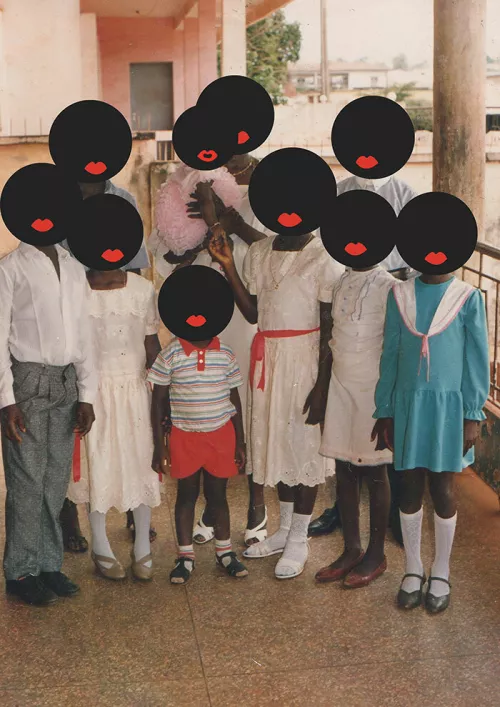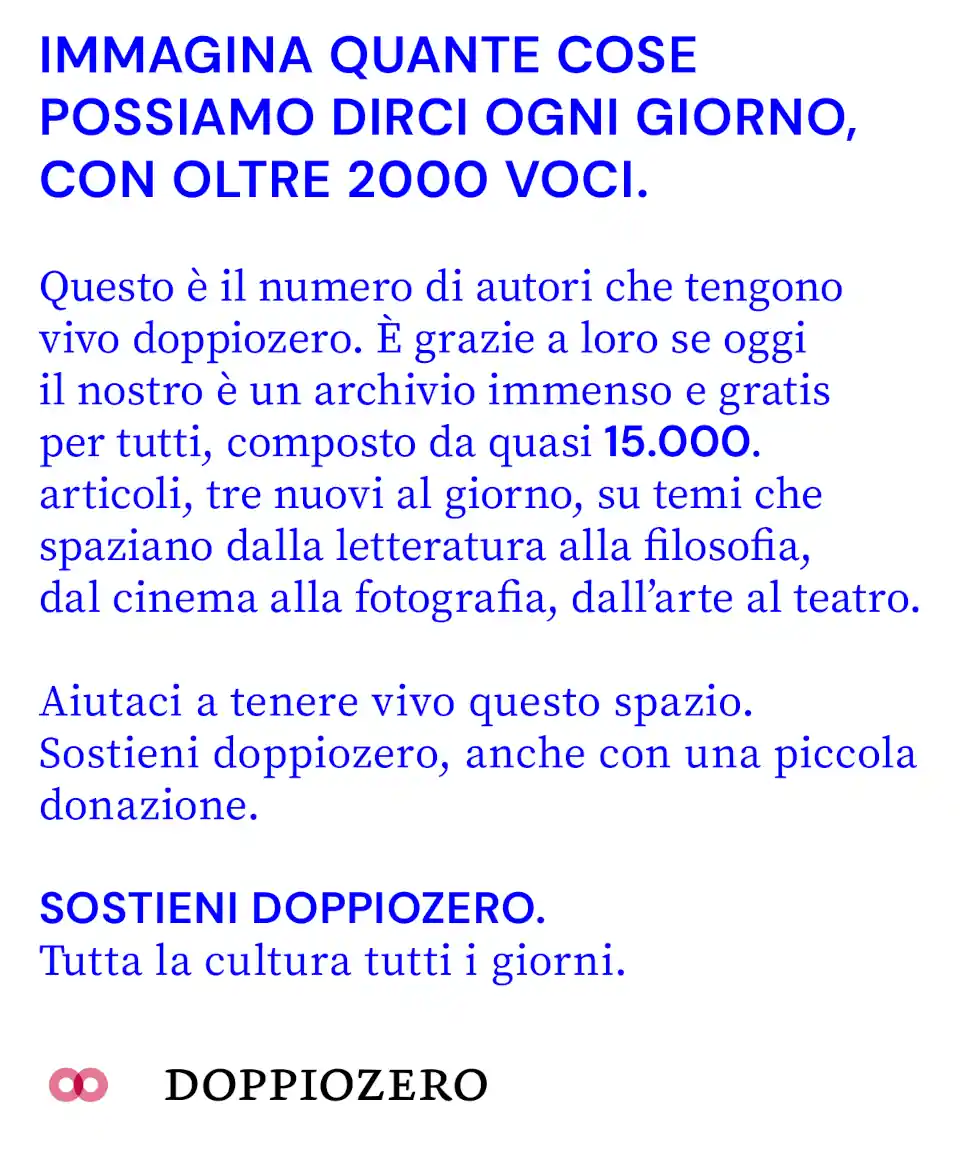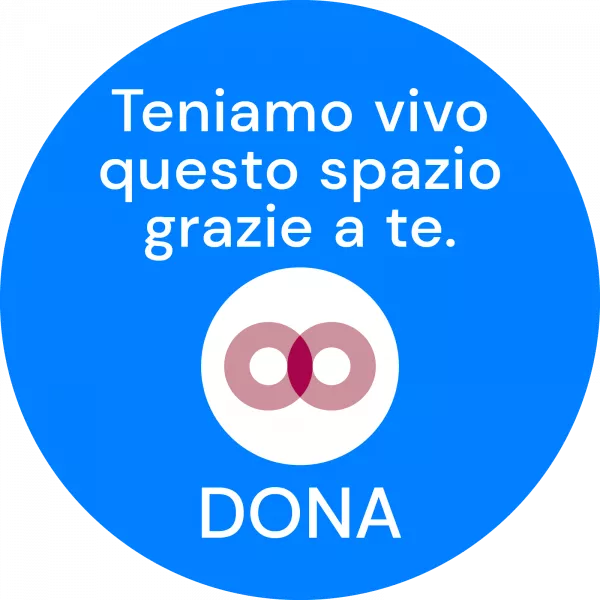Speciale
Tracing Emerging Contemporary Art Practice in Ghana
From Ghana to Venice and back
All the World’s Futures, curator Okwui Enwezor’s conspicuous project for the2015 Venice Biennale, certainly served up content-rich, social and political commentary. In one way or another it painted or rather – in true Enwezor fashion – documented a myriad of complexities facing our rapidly globalising planet. And, with Enwezor operating as the first-ever curator from the African continent, it’s no surprise then that many of the press discussions surrounding the biennale took on an African dimension.
Consequently, it felt apt to hear the news that Ghanaian artist El Anatsui was presented with a Golden Lion for Lifetime Achievement – a deserving recognition for one of the great artists of our time. Yet, Anatsui’s achievement was also an opportunity for me to once again turn my attention towards the arts and culture scene in Ghana.
Throughout the biennale proceedings I was repeatedly reminded of one particular thought from an interview earlier this year with ACCRA[dot]Alt’s Sionne Neely. “We are seeing more artists [in Ghana] now thinking differently about how to push their work forward…creatively collaborating…bartering with one another to get their needs met.
Perhaps the reason why this comment continued to return, was because it is the perfect compliment to the methodology and recognition of Anatsui’s contributions. Upon exiting the Arsenale through Ibrahim Mahama’s ominous serial jute sack installation, I was visibly aware of the past in discussion with the present. Emerging in tune with experience; connected through notions of repetition, seriality, material recycling and a common Ghanaian heritage. But above all, it was their shared collaborative spirit that provided a lens with which to look forward–into the future.
This intermingling between past, present and future, was an episode reminiscent of Walter Benjamin’s reading of Paul Klee’s Angelus Novus. However, it led me to recognise the sense of collaboration present in many conversations within this Next Chapter series; particularly, in the case of Ghana.
From the outside looking in, the collaborative dynamic is seemingly imbued with an even greater sense of urgency. Arguably, it feels as if this spirit is a key driver of what is happening in Ghana right now, as events like ACCRA[dot]ALT’s Chale Wote festival suggest.
The festival, an unapologetically multidisciplinary arts event, brings together everything from music to fashion, art to drama and even BMX riding. Yet, what is most encouraging about it’s success is how it both embodies Ghana’s current vibrancy and speaks to an exciting cross pollination. One that is happening between organizations such as Nubuke foundation, Foundation for Contemporary Art – Ghana, Accra Theatre Workshop, cultural research center ANO, ACCRA[dot]ALT and the Kwame Nkrumah University of Science and Technology Museum (K.N.U.S.T.).
In our interview, art historian, filmmaker and writer Nana Oforiatta-Ayim of ANO, spoke of the situation. “It feels like it’s not just enough for us to produce, but that we have to provide the context and the paradigms for that production.”
It is this recognition of a shared sense of responsibility that will be pivotal in terms of addressing some of the characteristic bureaucratic shortcomings, stimulating the field of emerging Ghanaian practice and helping to continually position it as an exciting, experimental space.
With this in mind, we have profiled three emerging Ghanaian artists who speak to these notions of energy, collaboration and multidisciplinary practice.
Contributions to an ever-developing discourse
Kwame Asante Agyare, Larry Achiampong and Kwasi Ohene-Ayeh each operate very unique and distinct practices, however various facets within their work speak to ideas of collaboration and multidisciplinarity. Whether it be Asante Agyare and his milk tin sculptures; Achiampong and his work with music archives or Ohene-Ayeh and his negotiation between the role of artist/curator, each practice possesses a dynamic energy. Their conscious decision to explore themes such as prejudice, heritage, labour and shared narratives mark their work with a maturity and urgency that positions them as vital cogs in Ghana’s emerging discourse.
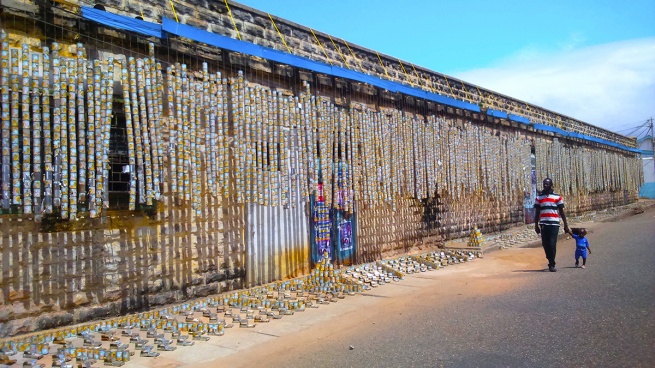
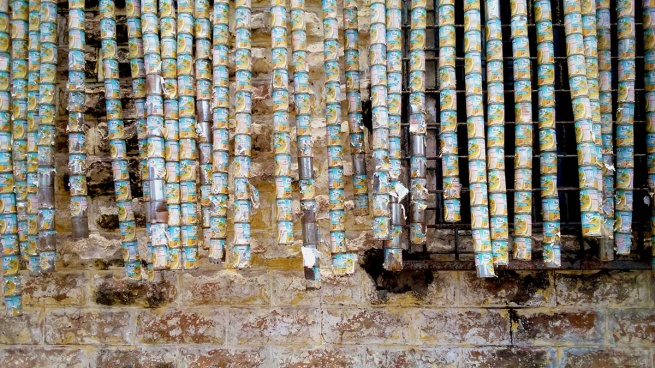
Kwame Asante Agayre's works.
Kwame Asante Agyare
Questioning relationships between Reality, Originality and Authenticity
Kwame Asante Agyare utilises recycled milk tin cans to create “curtains and Konko car” installations exploring notions of repetition and seriality. With an interest in the work of philosopher Jean Baudrillard – specifically his Order of Simulcrum – Agyare’s practice questions the relationships between reality, originality and authenticity. It is on this point, that an interesting dynamic develops between Agyare’s theoretical interests, and his use of materials. His decision to utilise a ubiquitous material such as a the milk can, speak to and simultaneously critique an everyday reality faced by many Ghanaians.
In an article with Nana Osei Kwadwo, Asante says of the curtains and tin cars,“they are planned through digital simulation models. My process is approached through mechanical engineering strategies. I appropriate the idea of bamboo curtains which can be found in local chop-bars across the country and the idea of tin cars which evokes the bricolage children’s toys that are popular in Ghana.” Here, within this process, a complex dialogue between reality and fabrication exists. There is a blurring of the boundaries as a toy tin car which is made alive through the imagination, is constructed out of a material used to hold a vital form of nutrition. Additionally, this material forms part of as Asante says, “the daily breakfast ritual.. a repetitive and serial process in our society.”
Kwame Asante Agayre holds a BFA from K.N.U.S.T. and is currently working towards his MFA at the same institution. He lives and works in both Tema and Kumasi. Notable exhibitions include 2015’s 5th Annual CHALE WOTE Street Art Festival (African Electronic), The Gown must go to Town, Museum of Science and Technology and 2014’s KNUST End of Year Show, Nubuke Foundation, all of which took place in Ghana. Agyare’s work has also featured on ACCRA[dot]ALT, the Imago Mundi Project and Barclays l’Atelier Art Competition, South Africa.
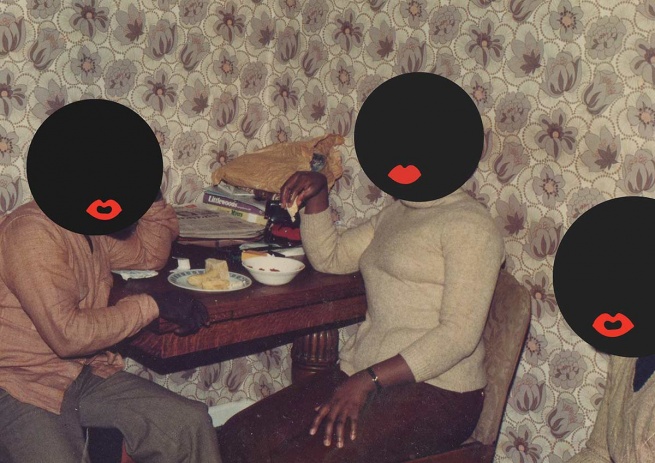
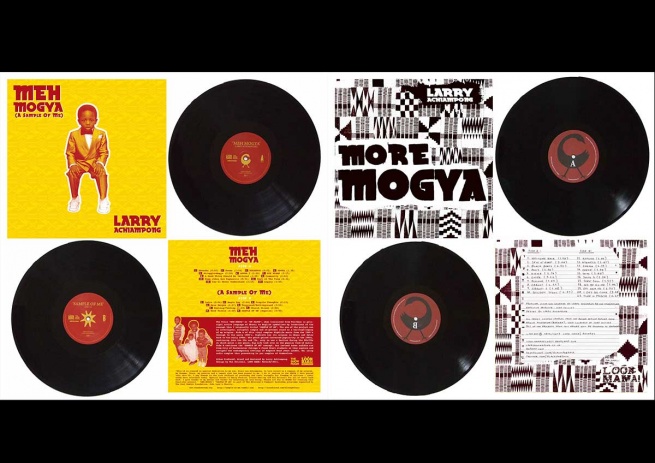
Larry Achiampong's works.
Larry Achiampong
Investigating heritage and identity in the post-digital age
Larry Achiampong – an artist of British-Ghanaian descent – utilises performance, installation, collage and sound to as Derica Shields writes, “reinterpret the visual and aural archives that he has inherited.” Meanwhile, Achiampong himself describes his practice as exploring, “representations of identity in the post-digital age and the dichotomies found within a world dominated by facebook/tumblr/youtube-based cultures.”
Living and working in London, Achiampong’s practice is arguably most recognized for his Cloudface motif. Exhibited in a performance at the Tate in London, in addition to an earlier collage series titled Glyth, this historically inspired racial motif, speaks directly to Achiampong’s interest in representations of identity. Drawing on Robertson’s Golly, V and his Guy Fawkes mask in V for Vendetta and Laughing Man in The Ghost Series, Cloudface has become a vehicle for initiating discussions on prejudice in its many guises. Furthermore, the process of conceptualising Cloudface reinforces the significance of this inherited archive that Shields alludes to, for Achiampong’s practice.
His interest in the archive, stems from a childhood informed by the physical library space – as a place of generating and disseminating knowledge. In the Shield’s interview, Achiampong says of this experience, “growing up with that aspect of society still very much intact I believe that interest in the archive, the story and the narrative naturally rubbed off on me.” Apart from the Cloudface motif, this interest has also manifested itself in both Meh Mogya and More Mogya, a recording project that traced his Ghanaian heritage via records owned by his parents. In addition, the project also served to question, “how the classic sounds of highlife music might be re-presented today,” in an age dominated by technology.
Born in 1984, Larry Achiampong holds an MA in sculpture from the Slade School of Fine Art in London. His work has been highlighted by Hyperallergic, BBC radio, OkayAfrica and ThisisAfrica amongst others. Apart from the Tate performance, other notable exhibitions include, ‘Wir Sind Alle Berliner: ’– ICI/SAVVY Contemporary, Berlin (2015); ‘Diaspora’ – Victoria and Albert Museum, London (2015); ‘MORE MOGYA’ – BAPMAF, Accra (2013) ; ‘Late at Tate Britain: Afrodizzia’ – Tate Britain, London (2010) and ‘dOCUMENTA 13’ – Hauptbahnhof, Kassel (2012).
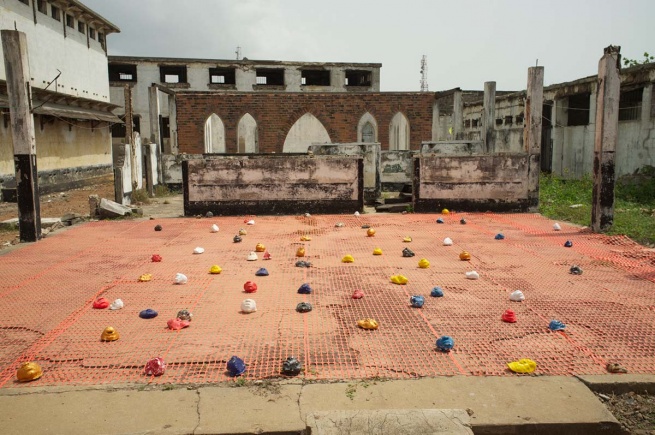
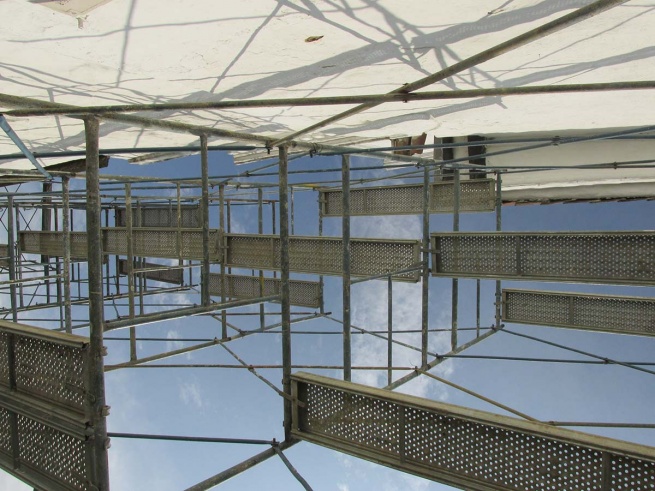
Kwasi Ohene-Ayeh's works.
Kwasi Ohene-Ayeh
On identity and the built environment
Kwasi Ohene-Ayeh is a conceptual artist and curator. His practice is multifarious and includes installation, performance and site specific/socially engaged projects. Based in Ghana, Ohene-Ayeh is interested in exploring the, “ambiguities in Accra’s contemporary sign systems and social identity.” He speaks of his works as in constant negotiation for relevance, “in the world of images and ideas.”
Working as both an artist and curator, Ohene-Ayeh’s situation presents an intriguing dilemma to his practice. Not only is there a complex overlap between curatorial and artistic uses of space, but there is also a definite negotiation of authority. Talking about the relationship between curators and artist, Ohene-Ayeh defines it as a, “collaboration.” However, he is quick to point out that, “it often evokes a power narrative between artist and curator” and as a result, “ not all collaborations are productive.” That being said, within his own practice this has cultivated a fertile relationship with physical space. Negotiating between these two fields, he has come to examine the built environment in order to assess, “how ephemeral identities are conferred on us when we move through physical space – interior and outdoor environments.”
Consequently, as part of the Prison Anxieties series, his project titled Untitled 3…[Letter to the Sky] produced during a residency at Lugar a dudas in Santiago de Cali, Colombia examined, “emotional stories of violence, death, escape, transition and will for freedom through Ghana’s colonial past.” Here, Ohene-Ayeh drew connections between San Antonio, the base of the residency, and Ga mashie in Ghana, through the shared narratives of invasion, trade and violence.
Born in 1986, Kwasi Ohene-Ayeh received a BFA in painting from the Kwame Nkrumah University of Science and Technology, Ghana in 2009 and is currently studying towards an MFA at the same institution. In addition to a residency at Lugar a dudas, Ohene-Ayeh has also participated in residencies at CCA Lagos and attended the Independent Curators International Curatorial Intensive in Marrakech. Curated exhibitions include, Voyage of [Re]Discovery, Ussher Fort Prison and Nubuke Foundation Gallery, Accra, 2015; Silence Between The Lines: Anagrams of Emancipated Futures organized by Ɛyɛ Contemporary Art and the College of Art, KNUST, Ghana. Noteable personal exhibitions include, “Dear Dakar’ 11th Dak’Art Biennale.
